Hate it or love it, your SaaS company needs SEO.
I mean, who doesn’t want organic leads coming to their doorstep, anyway?
Google receives approximately 2.3 trillion searches per year and you can get a piece of the cake.
Nonetheless, it’s easier said than done.
Good SEO requires scrupulous skill and planning. Many SaaS companies, unfortunately, don’t have either and it results in disorganization and poor results.
I’m going to help you prevent that today.
This article is going to teach you SaaS SEO strategies that will improve your rankings, organic traffic, and authority if you follow them. 🚀
Let’s get into it!
It all begins with keyword research
One of the most fundamental practices of SEO is keyword research.
Keywords are words and phrases that you target to rank for on Google, generating traffic and brand awareness.
It used to be as simple as slapping a few high volume search terms on your website and you ranked on the first page.
Today? Not so much.
SaaS companies need to understand the complexities of researching keywords. That’s why I recommend a tool like Ubersuggest. (SEMrush is great too!)
Let’s say that you’re writing a blog post about marketing budgets. You would type in a related keyword into Ubersuggest and hit the search button.

Next, navigate to the “Keyword Ideas” tab.
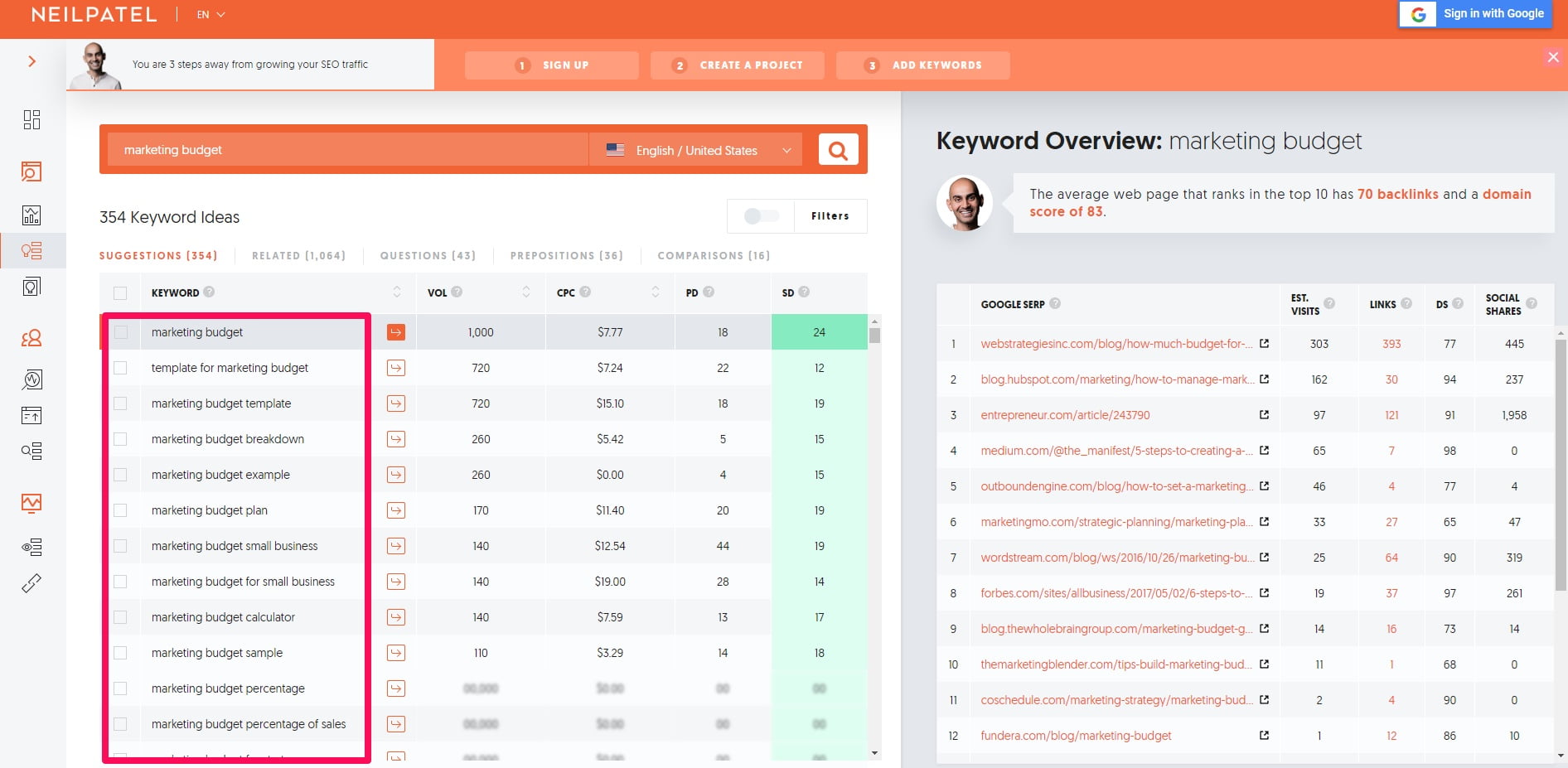
This will give you search metrics for the keyword you entered along with up to hundreds of other search terms.
You can filter the results via the “Related,” “Questions,” and other tabs for a specific type of keyword, as well.
Scroll down and you will find buttons to export the search terms to clipboard or as a CSV file.
That brings me to my next point on understanding the types of keywords.
The different types of keywords
No keyword is the same. Understanding how keywords and their meaning change will put you vastly ahead of competitors.
Because, here’s the thing…
Many marketers–and I’m guilty of this in the past–use keywords randomly.
They don’t understand the different variations of terms and what the users searching for them want. (More on user intent later, too.)
Here are the main types of SEO keywords and how you’ll need to adjust content accordingly:
Transactional
What do you think someone searching “best marketing automation tool” is interested in?
Most likely a product page, list article, or review to help them make a purchasing decision.
A.K.A these users are in the awareness and research phases of the buyer journey.
While it could be tempting to place this keyword elsewhere, it probably won’t be effective.
For instance, here’s one of the first articles that ranks for that exact term:
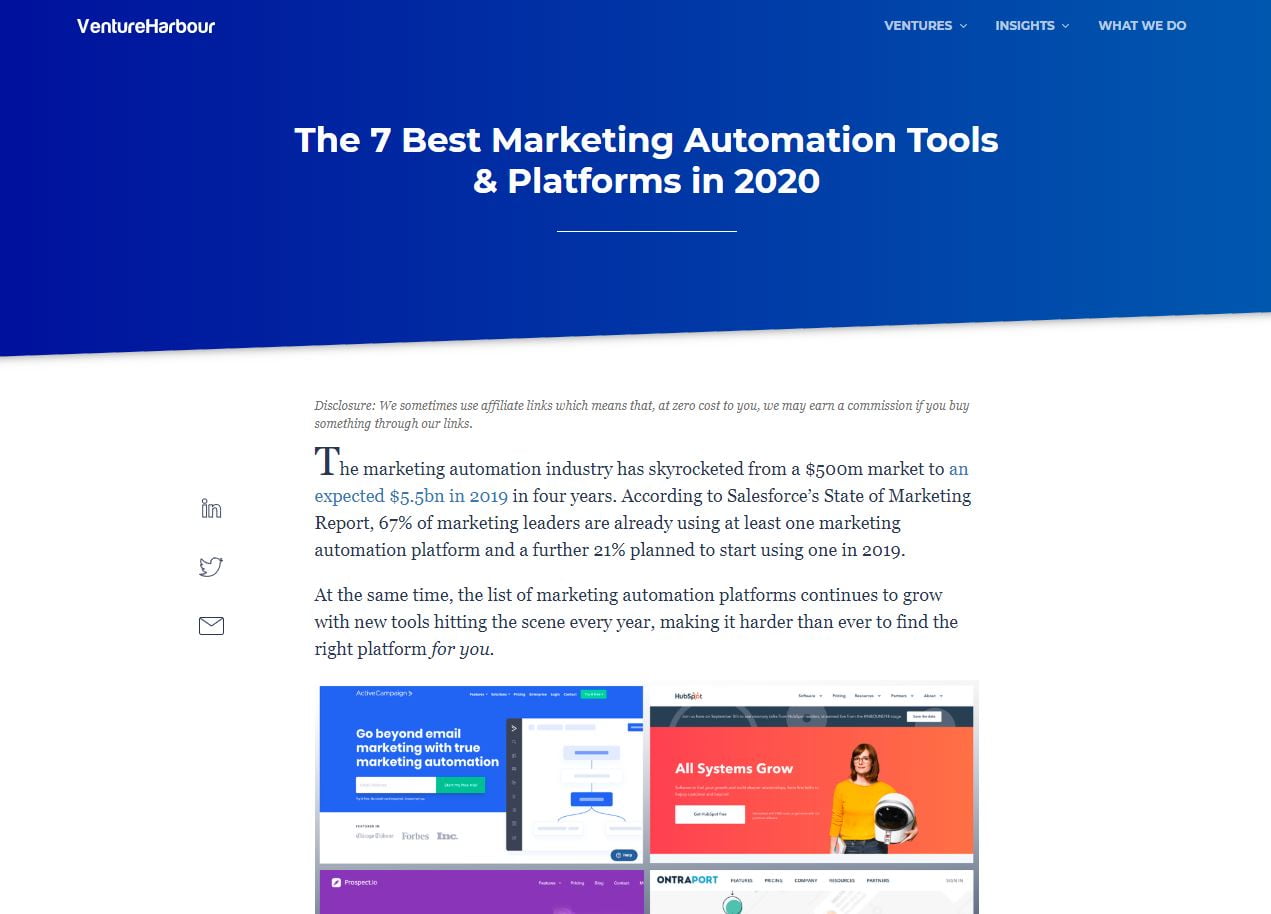
It’s an in-depth and long-form blog post detailing the pros and cons of what they believe to be the best automation tools.
It gives the audience all of the information they need to make an informed purchasing decision and weigh their options. Bingo!
If your SaaS company is going to target transactional keywords, ensure that they forward the user to:
- A list article
- A comparison article
- A review
That brings me to the next type of keyword that you’ll be using most often.
Informational
Your SaaS SEO strategy will most likely consist of informational keywords. These, as you could guess, have the intent of learning something.
Think about tutorials, how-to blog posts, guides, and similar pieces of content.
Heck, look at the article you’re reading right now!
I targeted informational keywords to get you here 😉
This would be an information focused article, for example:
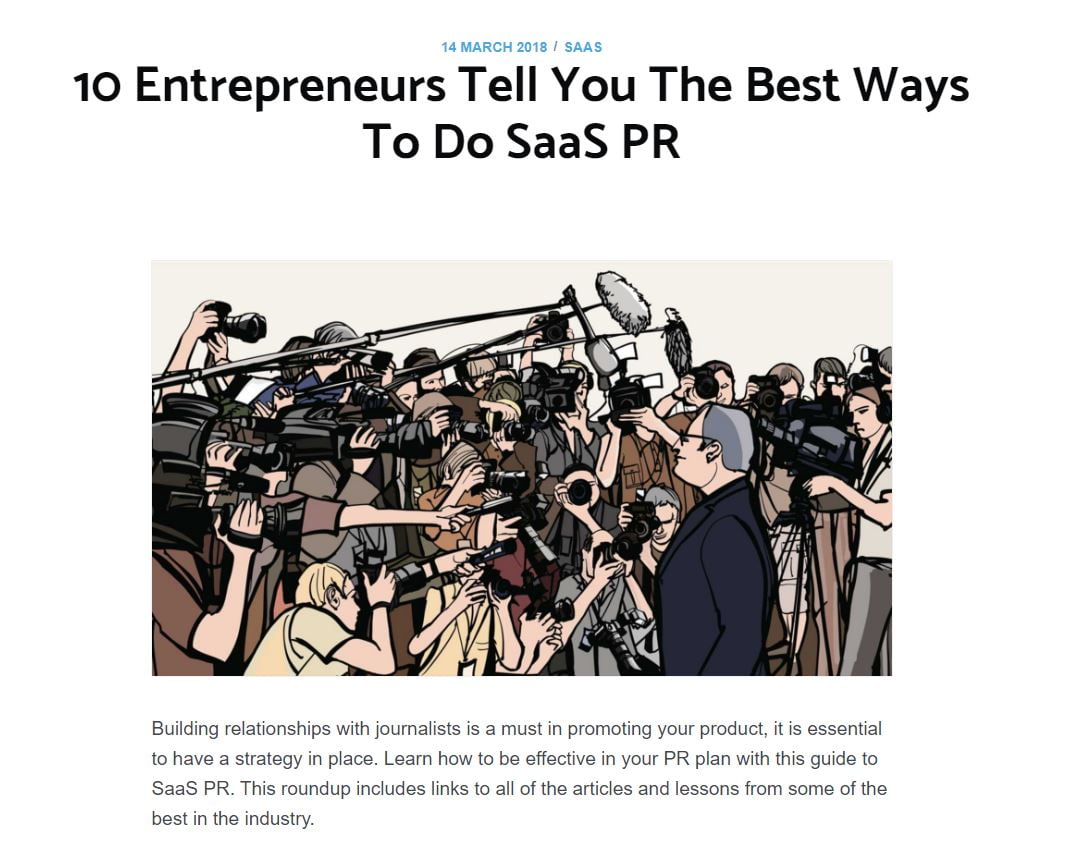
Readers interested in SaaS public relations would probably want to learn techniques and strategies, right? It’s simply aligning with the user intent.
Let’s talk about the third type of keyword next.
Navigational
Some users are looking for specific brands.
They search the company’s name into Google to find them. This is a navigational search term.
It’s a great signal that your brand awareness is increasing because users are directly trying to find you.
That’s like if I searched for Puma on Google like this:
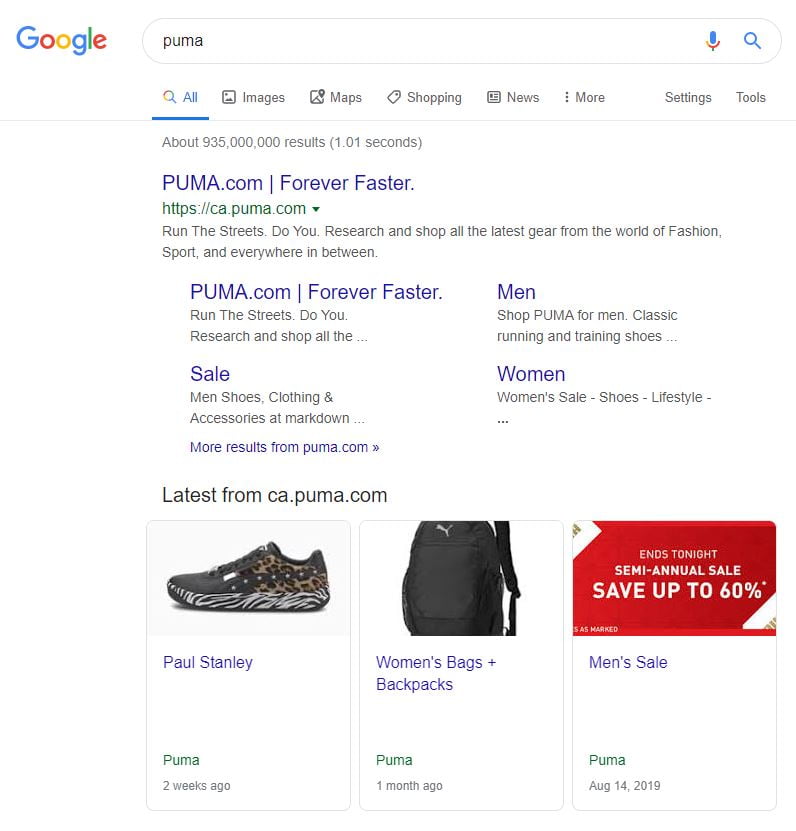
Ensure that your company’s name is placed in title tags, meta descriptions, and pages to be found easier.
Don’t forget about voice search
If you’ve performed keyword research, you know that traditional search terms can be choppy and unnatural.
However, things are changing.
How many times have you heard someone say “Hello, Google” followed by a question?
Or, what about Alexa and similar smart home devices?
It’s on the rise, and in fact, 50% of all searches will be via voice in 2020.
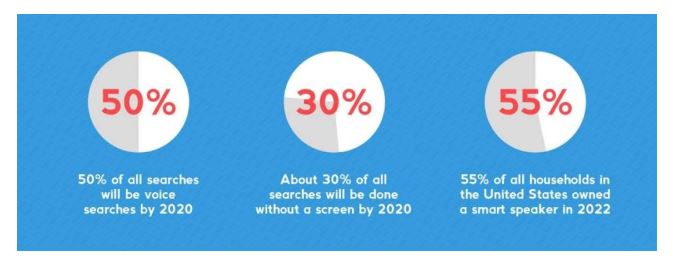
What does this mean for a SaaS company and their SEO?
Mainly that it will change how you research and implement keywords.
This is because consumers are using full sentences and questions when speaking into a device versus when they type snippets.
For example, a user may type in “best marketing agency New York” but ask “What is the best marketing agency in New York?”
Both have their potential, but search marketers need to be targeting the complete version for maximum SEO performance in 2020.
What’s the user intent?
One of the secrets to great SEO is matching the user intent of the keywords you’re targeting.
Ask “What is the user interested in learning and finding?” every time you use a search term.
Craft content that achieves all of this and you’ll be rewarded with high rankings and quality leads.
Put yourself in their shoes. What are they thinking? What are they feeling? What are their goals?
This is because it improves the user experience, and Google does its best to match content to search intent–potentially boosting your ankings.
Consistent and quality content
Content and SEO go together like steak and potatoes.
You could have just one, but it wouldn’t be nearly as good!
Additionally, epic content is the heart of what will drive traffic to your business and generate leads.
Here’s how to produce content that crushes the SERPs. I also recommend using a content marketing toolkit to greatly improve the process.
Long form content is non-negotiable
What’s the best blog post length?
Is it 500 words? 1,000?
As a matter of fact, it’s closer to 1,890 words according to a study performed by Backlinko.

They analyzed over one million search results to find patterns in high ranking pages and this was one of the top discoveries.
But, why does long-form content perform so well?
Firstly, more words=more keywords. A.K.A increased opportunities to rank and drive traffic.
Secondly, it packs a much bigger punch than contentshort-form content. Google loves value and will reward it accordingly.
Similarly, longer content can keep users on the page for longer, signaling to search engines it’s high quality.
Long-form blog posts have also been found to receive a majority of social shares. This creates a viral effect that gets your SaaS company free publicity without spending extra budget.

I know that writing a 2,000 word article can seem like climbing Mount Everest. Not to brag, but I write several thousand words a day without breaking a sweat.
Do you know what my secret is?
Creating an outline.
Yeah, it’s that simple. Write out all of your headers and sub-headers along with any ideas under them like this:
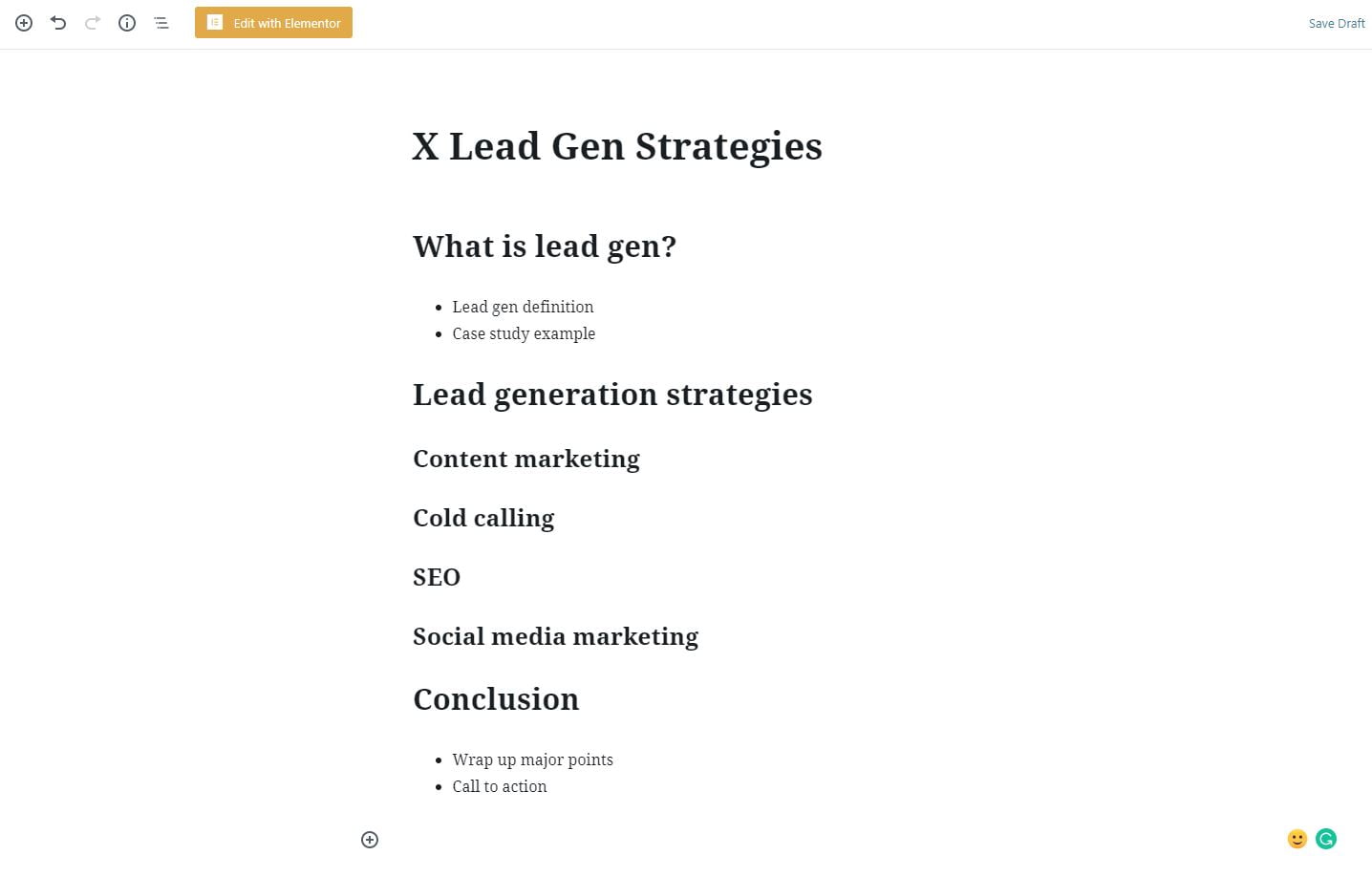
You want to do this because you’ll know exactly what you’re writing about next without needing to pull your hair out.
Say goodbye to writer’s block!
Imagine you had ten points in total you’re going to write about. In that case, write 200-300 words under each header. Think of it as a mini blog post.
Next you know, you’ve written a few thousand words with a breeze 🙂
Polish the on-page SEO
Once you’ve put a ton of sweat equity into an article, it can be tempting to publish it and get it over with.
Not so fast, bucko.
It’s time to polish the on-page SEO to maximize rankings and traffic.
Let’s run through some steps you need to take for each blog post.
Keyword placement
Every article should have a main keyword and secondary keywords you wish to target.
The main keyword should be placed in:
- The title
- The headline
- The URL
- The first paragraph
- Within a header tag(optional)
Secondary keywords can be sprinkled throughout the body of the article.
I would argue against using a keyword more than two or three times. That’s stuffing and Google will give you a slap on the wrist for doing so.
A site audit tool will help identify opportunities and issues instantly.
Formatting
Well-formatted articles keep users on the page for longer, improving the reading experience and signaling to Google its a high-quality blog post.
You can format your article for search engines by first breaking apart ideas with header tags like H1, H2, and H3.
Consider how this article is broken apart into clear sections. This makes reading and skimming it much easier.
It also tells Google spiders what the page is about.
Furthermore, take advantage of bullets and lists to sum up information quickly.
Short sentences and paragraphs are another way to improve readability.
Distribute it
Once your masterpiece of an article is finished, your job has just begun.
It is now time to distribute it to the world.
This will drive immediate traffic to your website while also generating things like social signals which help rankings.
That’s also why social media should be your first stop for promoting content. Share it on platforms like:
- Medium
Ensure that you use related hashtags to maximize reach, as well.
Google does in fact consider social engagement a ranking signal as it implies people enjoy your content across different channels.
Next, send it out as an email newsletter. Email marketing is up to 30% more effective than social, so this can’t be ignored.
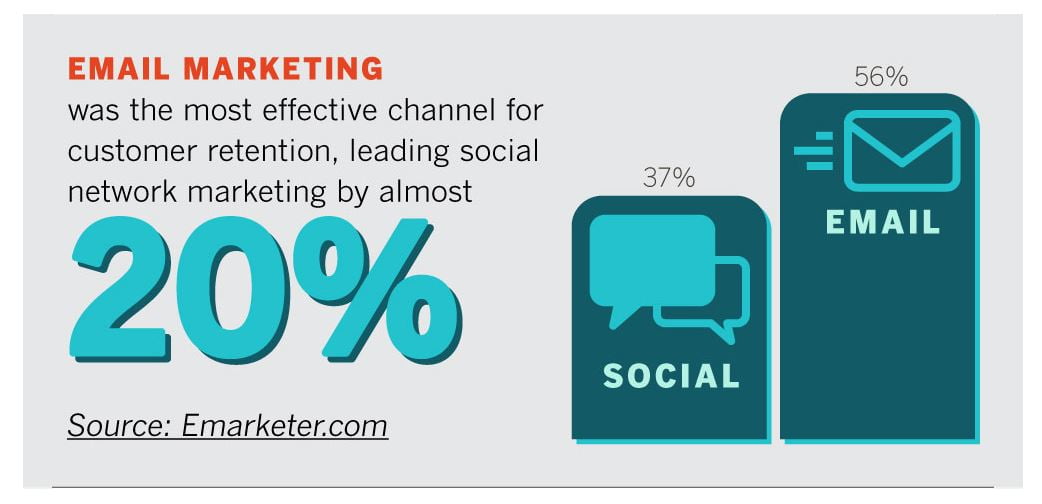
Use a catchy subject line and create a teaser of the article in the body. Check out this one from Neil Patel for inspiration:
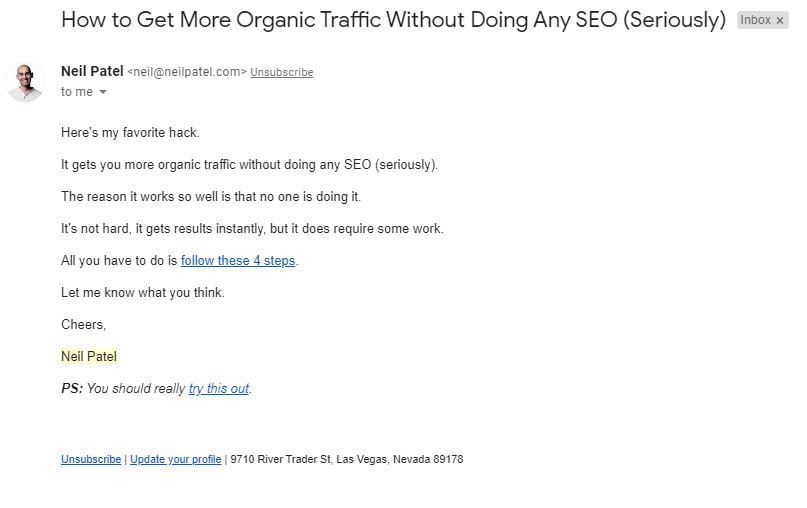
It doesn’t need to be overly long, but rather straight to the point with a call to action.
People will share the article via social networks and email if they enjoy it, further pinging Google that your content is worth ranking higher.
You need links
Epic content and perfect on-page SEO will generate mountains of traffic and leads, but there’s one last thing you need to about SEO for SaaS companies.
You need backlinks. Lots of them.
A backlink is a hyperlink from another website that points to yours.
It tells search engines that your website is important because other sites are linking to it.
Despite it being one of the first major ranking signals introduced years ago, it remains as one of the most important.
Digital marketers gamed the hell out of it back in the day, too.
They would spam thousands of backlinks to their website, rank instantly, and laugh all the way to the bank.
But, Google caught on. And, as a result, began weighing backlinks differently.
Nowadays it’s about quality over quantity.
A few authoritative links from big publications can be worth thousands of lesser quality ones.
How can a SaaS business build links? Here are the two best strategies.
Guest posting is #1 in my opinion
Guest posting is the best strategy for building links and let me tell you why.
Firstly, your name and face are on the article. This gives you credibility, branding, and PR all in one swoop.
Look at this article I wrote for Social Media Examiner:
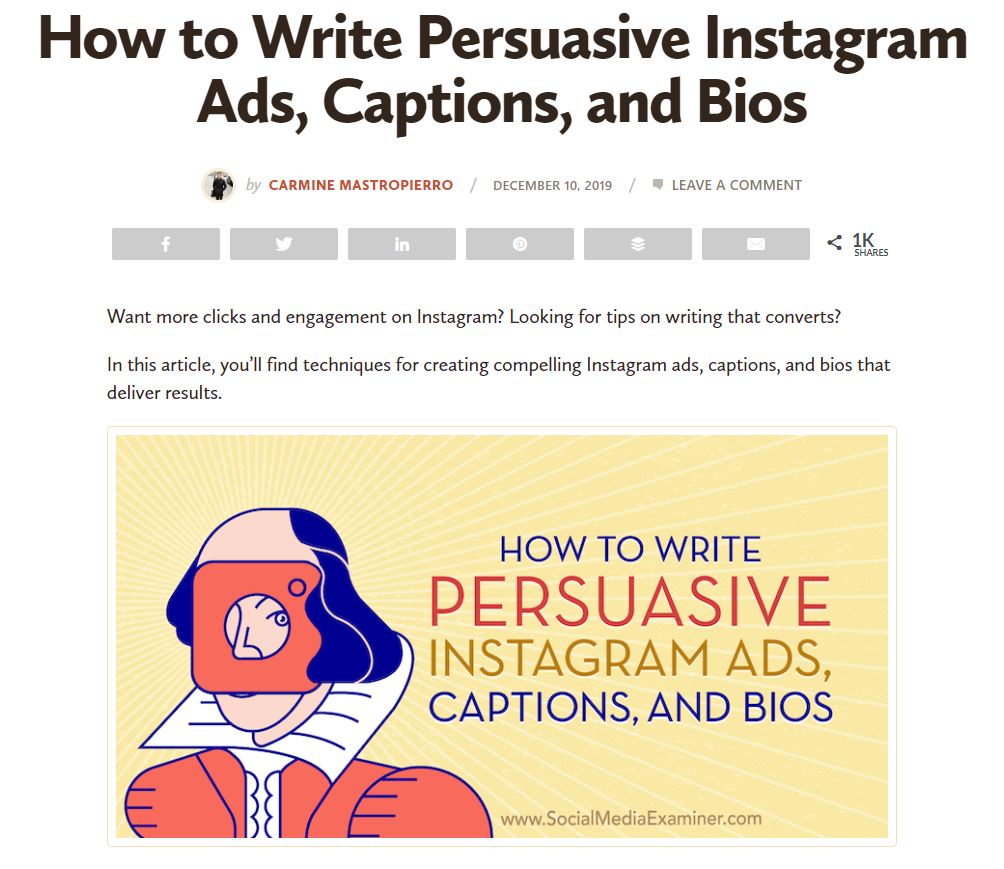
Not only did this give me an incredibly powerful backlink, but it generated my agency leads and increased my brand equity.
So, how can you begin guest posting? Follow these steps:
Step 1: Find publications in your niche that accept guest authors
The first step is finding websites that accept guest posts, to begin with.
You can do so by visiting Google and entering in one of the following operators:
- Keyword + inurl:guest-post
- Keyword + inurl:become-a-contributor
- Keyword + inrul:submit-guest-post
The “inurl” operator will find results that include the URL you enter after it. The ones above are common guest post footprints.
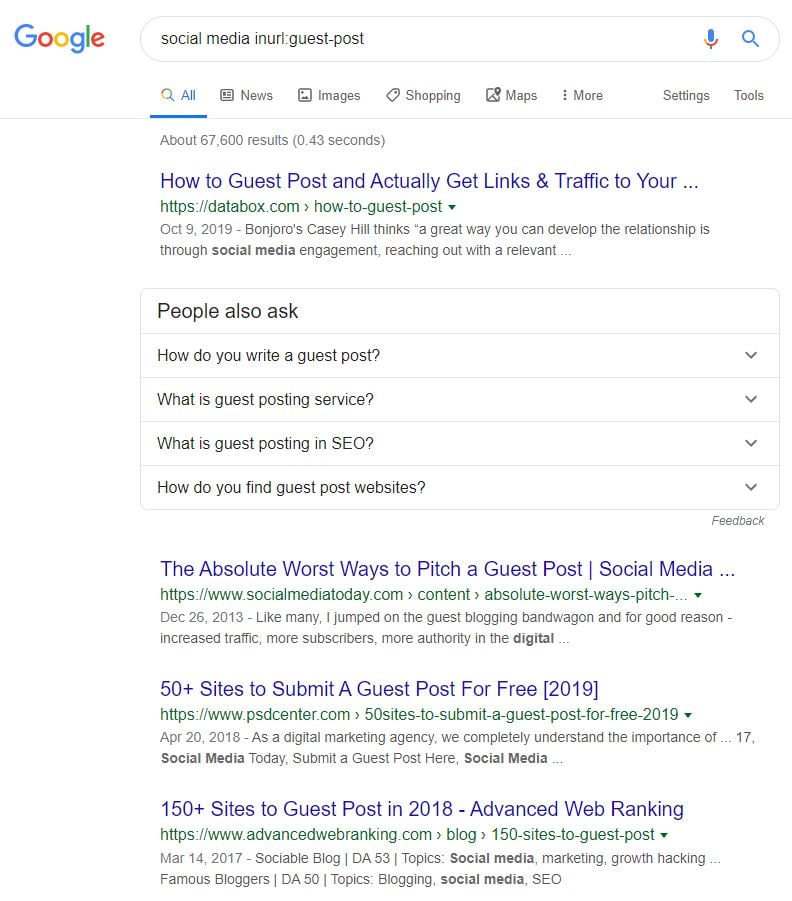
Staying organized is crucial here, too. That’s why you should create a spreadsheet like this:

Include columns for the URL, date of pitching, and notes.
Step 2: Pitch the editors
Websites that accept guest posts will provide the email addresses for editors typically on the guest author information page.
Send a personalized message to the editor with a template like the following:
Hey {First name},
My name is {Name} and I’m the {Position} at {Company name}.
We’d love to contribute a guest post to {Publication}. Are any of these topics of interest?
1. {First topic}
2. {Second topic}
3. {Third topic}
Warm regards,
{Name}
Remember that people are smart. They can see right through a copy and pasted message like a glass window.
Customizing the email for each publication makes your company appear more genuine while increasing open and reply rates.
Step 3: Write the guest post
Once an editor has approved one of the topics you’ve suggested, it’s time to write it.
Make sure to ALWAYS follow the guest post guidelines of each publication. Doing so will maximize the chances of being published with as little headaches as possible.
They typically involve:
- Word count
- Linking rules
- Required byline information
- Suggested topics
- Tone of voice
- Etc.
Promote the guest article as you would your own once it’s live. Tag the publication on all channels and send a personal thank you email for the opportunity.
Guest authoring is an incredible way to network and build relationships for this reason.
Many times editors will ask you to publish another article or send referrals your way in the future.
The “Skyscraper” technique
The other most effective link building method is one coined by Brian Dean called the “Skyscraper” technique.
This involves finding a viral piece of content, creating one that’s better, and reaching out to referring websites to have them replace the original link with yours.
Listen to Brian talk about it in-depth in this video:
Here’s how to pull it off yourself:
Step 1: Find viral articles and referring domains
Begin searching Google for industry-related articles. Pay attention to the first few results, as these will have the most traffic, exposure, and ultimately links.
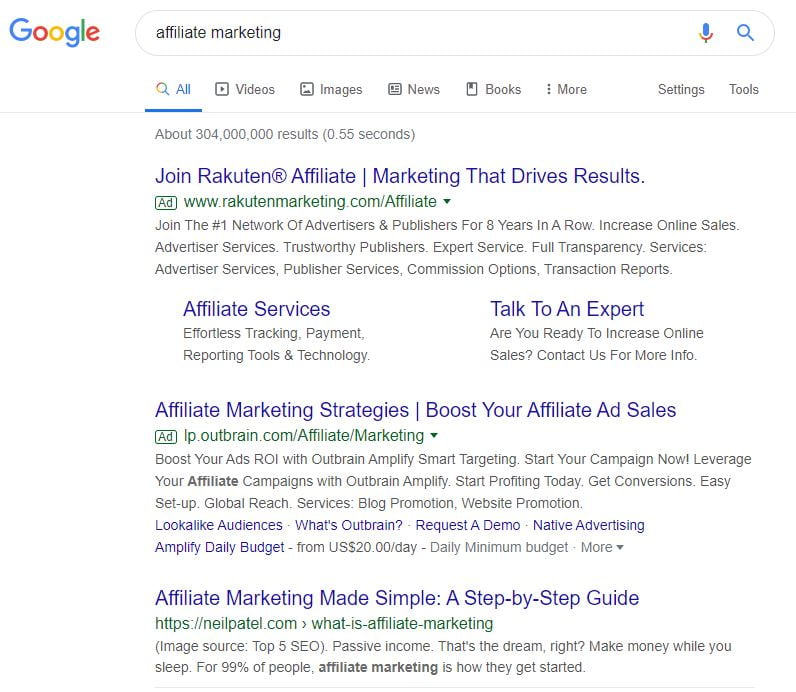
To check how many links an article has received, copy and paste the URL into a tool like Sitechecker.

Scroll down the page to see a list of URLs the article is receiving backlinks from.

If the article has a large link profile, it is a good target and you can move onto the second step.
Step 2: Create a better article
You need to take the original blog post and make it much more valuable if you wish for this technique to work.
That means you need to audit content elements, such as:
- Word count
- What information is given
- How many images are used
- How many videos are used
- What kind of graphics are used
- Formatting and style
- Etc.
Pretend you’re a CSI investigator and the blog post is your crime scene. You want to know every little detail so you can improve upon it.
Also, read the comment section under the original article. See if users left any feedback about what they wish would’ve been included.
Step 3: Reach out to the referring publications
It’s now time to reach out to all of the websites linking to the original article.
Visit the referring domains you discovered through Sitechecker and locate their contact page.
Send them a personalized message using the following template:
Good {morning/afternoon/evening},
I really enjoyed the article you published on {Topic} here: {Url}.
However, one of the resources you linked to is outdated in the {Section} of the blog post.
{Your company} recently published a more in-depth guide if you wish to check it out and replace the link for your readers.
Looking forward to your thoughts.
Warm regards,
{Your name}
I also recommend following up every couple of days until you receive a response. This will increase how many links you generate, as not every webmaster can respond quickly.
Final thoughts on SaaS SEO
SEO for SaaS companies doesn’t have to be difficult. You simply have to understand the fundamentals, stay organized, and scale.
The first of which is keyword research. Use tools like Ubersuggest or SEMrush to find search terms you can focus on within content.
Keep in mind the type of search terms you target as it changes how you create content, as well.
You will also need to include natural long-tail keywords with voice search on the rise.
Then, consistently produce long-form content with practical and data-driven advice.
Build backlinks to content afterward through guest posting and the “Skyscraper” technique. This will increase traffic, rankings, and authority.
Don’t wait around. Your competitors are practicing content marketing and SEO already, so you don’t want to fall behind.
Reach out to me if you require SaaS SEO services to acquire users, leads, and grow faster.














